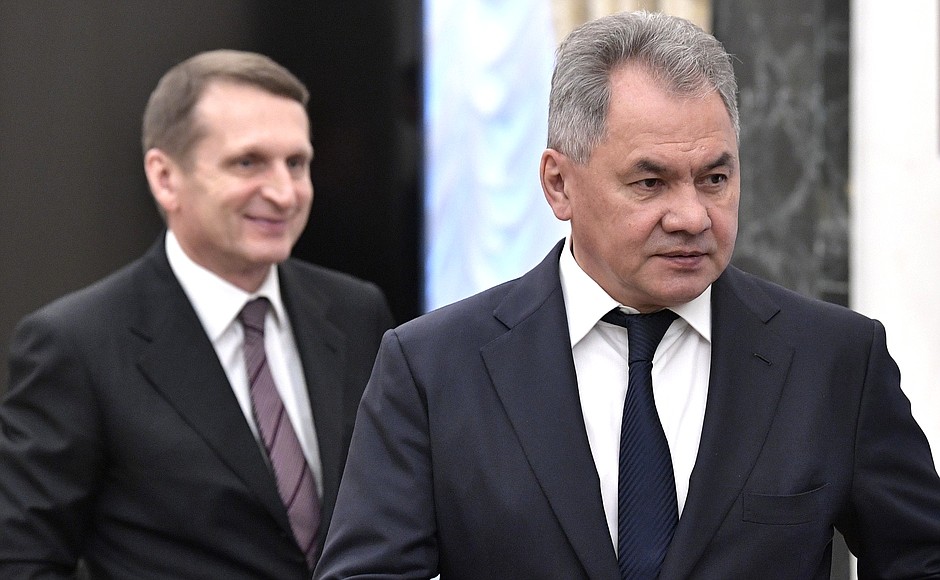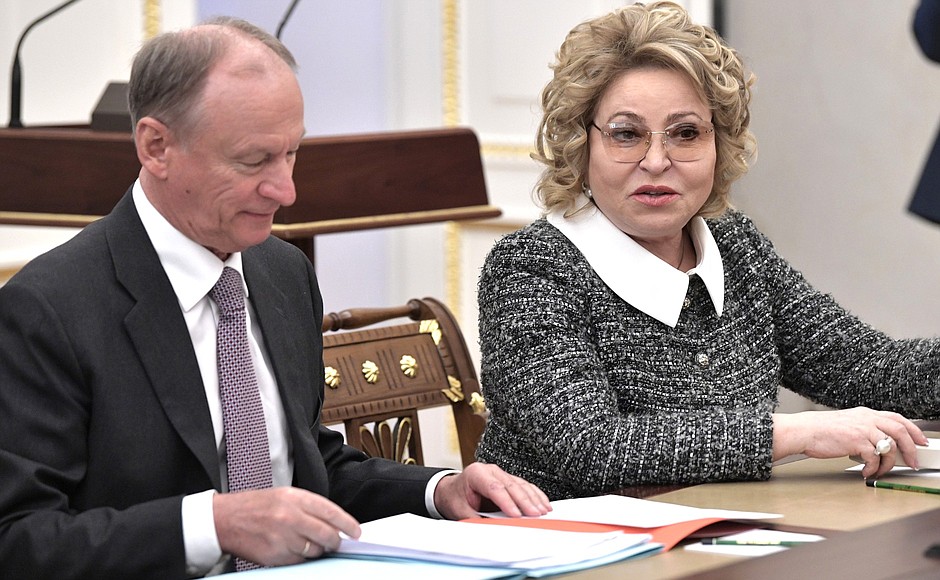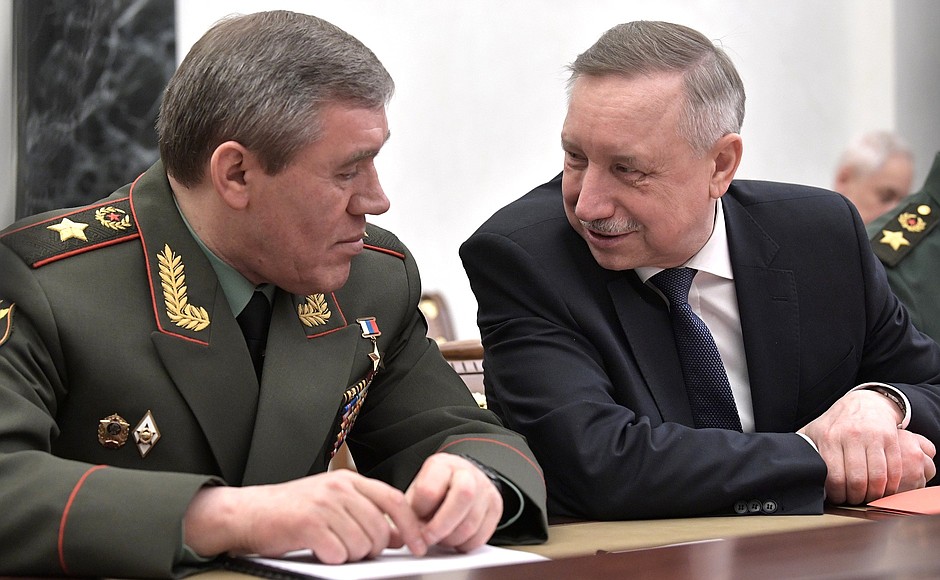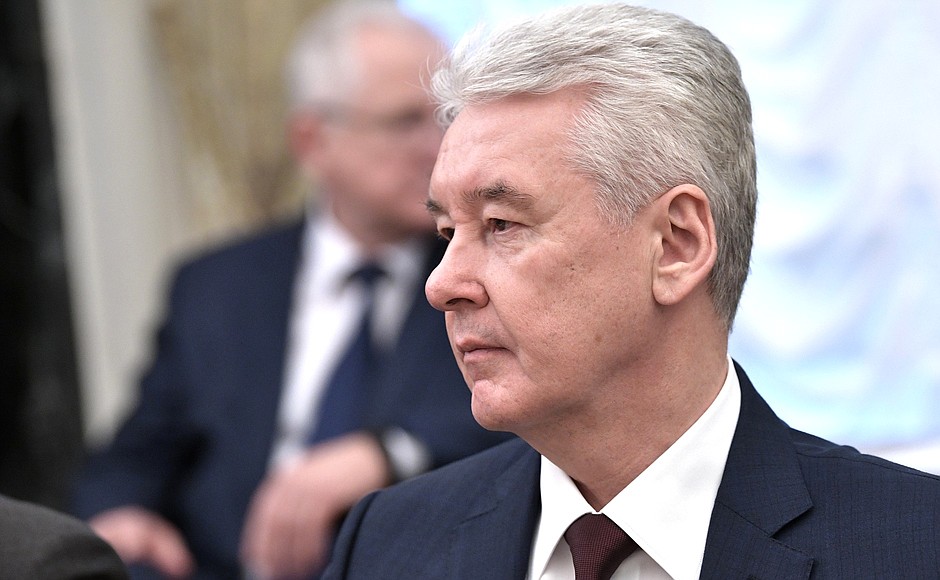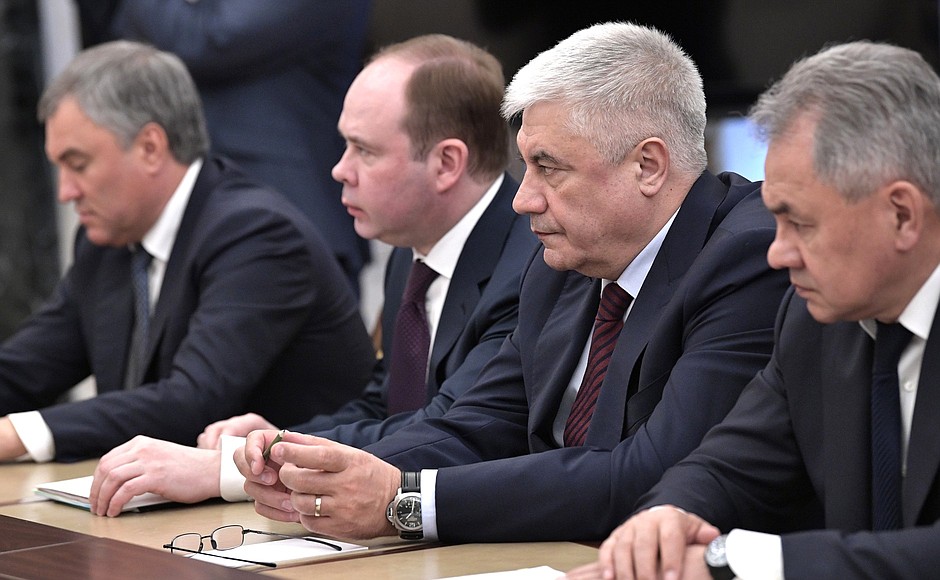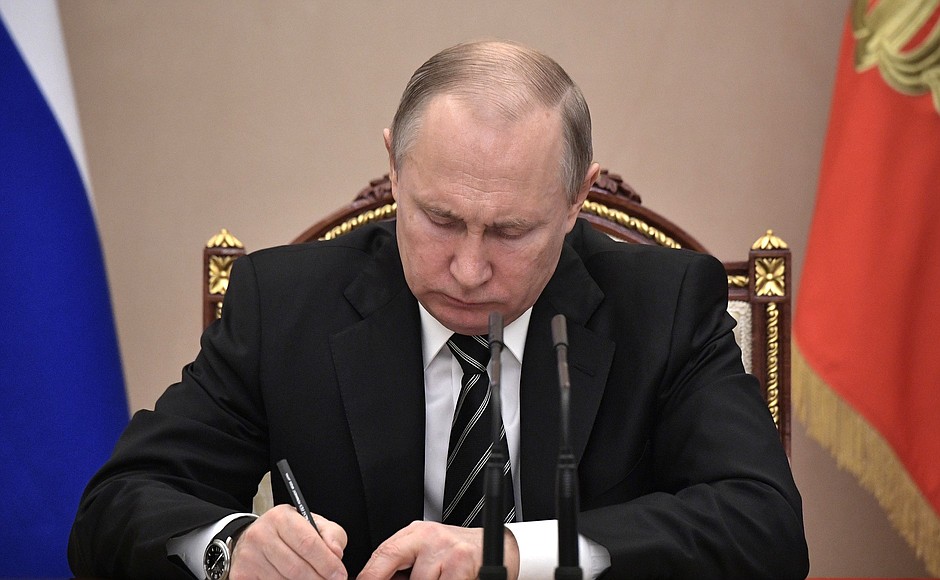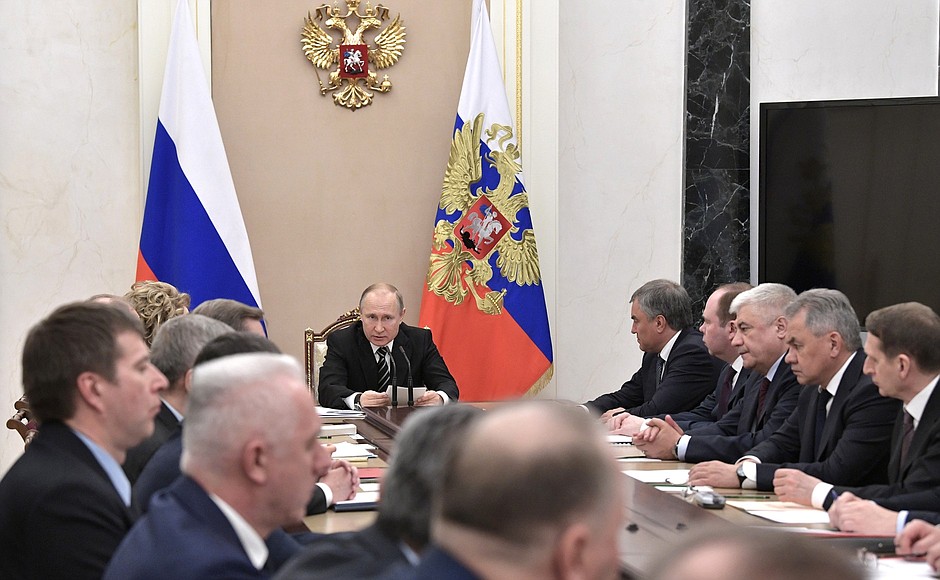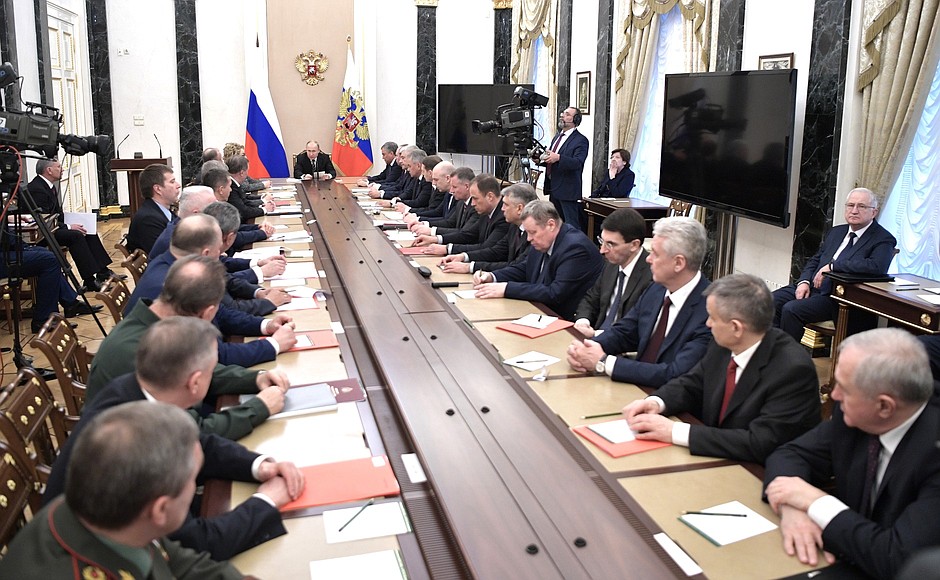The Russian National Space Programme for 2013–2020 was adopted in late 2012. The programme outlines three priorities for Russia’s space activities. The first is guaranteeing Russia’s access to outer space, the development of space equipment, technology and services, as well as the rocket and space industry and fulfilling international obligations. The second is creating scientific space equipment. The third is carrying out manned flights.
The state programme says that by 2020 the Russian rocket and space industry should double its production capacity as compared with 2011, and that Russia’s share in the global production of space equipment should reach 16 percent.
* * *
President of Russia Vladimir Putin: Good afternoon, colleagues,
As you all know, Russia only recently celebrated Cosmonautics Day. Today, at the Russian Security Council meeting, we will discuss matters of improving state policy on space activities in a working, business-like manner. This subject, as we all understand, is highly important, and always relevant.
I have already spoken about the importance of the country’s leadership in space for the cause of solving its national development issues and ensuring its security and technological and economic competitiveness.
Russia has great experience in developing and manufacturing space technology, preparing for flights and carrying out large-scale scientific programmes in orbit. This is unique groundwork, but, of course, it constantly requires further development.
It is obvious that we have to totally redesign the rocket and space industry, implement state-of-the-art management models for production and scientific and research work; we have to learn to efficiently implement the results of space activities in every sphere of life, including in primary industries, such as telecommunications, communications, transport, medicine, and housing and public utilities.
Increasing export is a task of fundamental importance. According to expert assessments, today the global market of space-related services amounts to about $183 billion per year.
In the years and decades to come, this number will only grow. If we just choose to stand still or talk about our previous achievements over and over again, it will become simply impossible to catch up.
It is important to use our advantages to the full – and we have them, this is obvious. It is a common task for the Government, all competent bodies and, of course, Roscosmos.
It is time to finish the necessary reorganisation of the state corporation, move on to the systematic result-oriented work and consistently solve those evident problems that are stalling the development of the rocket and space industry.
For example, the pricing and time parameters at the bottom of new space projects are often not properly substantiated. As a result, the initial deadlines get postponed and the budget expenses increase. It has happened multiple times over the past years.
Meanwhile, the national system of satellite communications, optical and radiolocation imaging of the Earth, the collection of meteorological data are inferior to our competitors in terms of quality, reliability and orbit operation time. A major part of the equipment and electronic components need to be upgraded.
We can change the situation only by real action, through tangible reinforcement of the workforce, technological, production potential of the rocket and space industry and, first and foremost, by developing ambitious but strictly realistic plans and goals, and by coordinating the strategic development tasks with the capabilities of companies as well as design bureaus.
In this context, the first thing we need to do is to update the Principles of Russia’s state policy on space activities through to 2030 and beyond, introduce relevant clarifications and additions taking into account current global trends.
This also concerns other statutory and regulatory documents, including the Strategy for the Development of Roscosmos State Corporation.
Second, we need to devote the most serious attention to scoring long-term science and technical, technological and production achievements earlier than planned.
For this purpose, it is necessary to constantly monitor the process of developing and introducing advanced technologies that facilitate a breakthrough in developing new-generation space technology.
It is important to find effective mechanisms for innovative development of the rocket and space sector, to concentrate financial, organisational, HR and administrative resources on high-priority aspects and to suggest new forms of public-private partnership. We now have this opportunity.
Ground infrastructure development, including a more active use of the Plesetsk Space Centre and completing the second stage of the Vostochny Space Launch Centre, is the third key task. Of course, the Government should also pay attention to specific rates and prices.
It has been already reported several times that not a single company is ready to complete the work with such rates and prices. We should address this matter in a somewhat realistic and well-substantiated manner. And it goes without saying that we should not overprice anything. We need a realistic approach.
I would like to note once again that we need to be able to fly independent space missions from Russian territory, and the Vostochny Space Launch Centre should start handling additional launches already in the near future.
It is also necessary to complete facilities for the latest launch vehicles, including Angara-A5 and Angara-A5M rockets, at Russian space centres and to continue expanding multirole satellite clusters.
I would like to recall that the first launch of this rocket from Vostochny is scheduled for 2021, and the Angara-A5M launch vehicle is to lift off from there in 2025.
And, finally, the recruitment of skilled specialists is our key task. Over a period of the past few years, we have implemented a number of measures to attract young professionals into companies, R&D centres and design bureaus. The industry’s HR situation therefore began to gradually improve.
It is necessary to continue attracting and retaining talented industry specialists who can implement even the boldest projects. It is necessary to create worthy living and working conditions for them, including through a system of special stipends and grants.
In conclusion, I would like to note that we need to work on each of these aspects both at federal and regional levels. This is also important. It is necessary to mobilise all capabilities, including those of the regional authorities.
<…>
